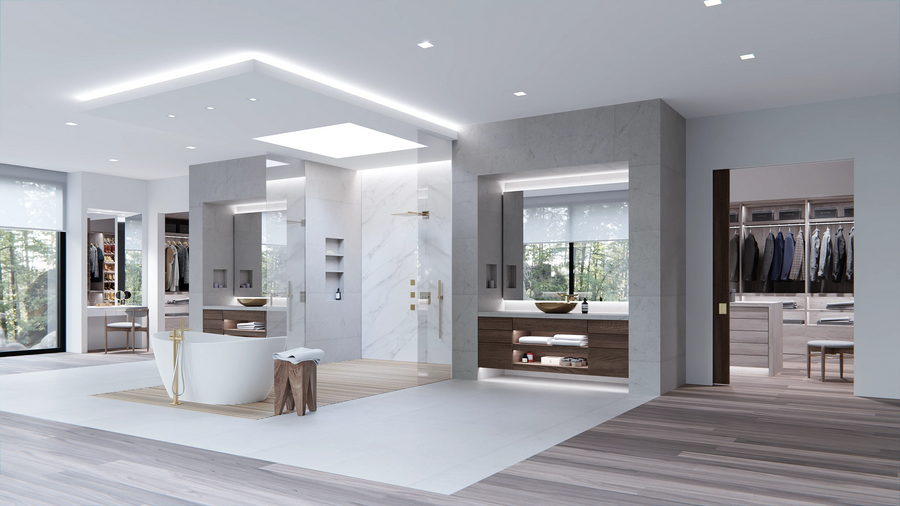When envisioning a well-designed space, we often focus on the layout, furniture, and décor. However, one element that significantly shapes the ambiance and functionality of any interior environment is often taken for granted: lighting. Lighting design plays a pivotal role in defining the character and mood of a room, going beyond its fundamental purpose of illumination. By understanding and applying key lighting design principles, it is easy to create spaces that are not only well-lit but also visually captivating and emotionally engaging.
At Sound Decision, we partner with Lutron, the world leader in lighting and shading solutions. Through the unique smart features of this brand and the expertise and knowledge of our team, we can transform the look and feel of your entire home.
Keep reading this blog to explore how a professional Lutron lighting design will be the element that completely redefines your living spaces in your home, whether you live in Roanoke or Lynchburg, VA.
SEE ALSO: Lutron Home Automation Transforms Everyday Living
The Basics of Lighting Design Principles
Effective lighting design begins with a deep understanding of fundamental principles underpinning compelling lighting schemes. Color temperature, which dictates the perceived warmth or coolness of light, plays a crucial role in setting the mood and atmosphere of a space. Brightness levels and the strategic layering of light sources contribute to the overall visual impact and functionality of the lighting design. By integrating Lutron solutions, you can effortlessly manage your lights and craft an environment that caters to the specific needs and aesthetics of a space, enhancing both its practicality and visual allure.
The Interplay of Light and Space
Lighting design principles are intrinsically intertwined with architectural elements and interior features. Lighting can be utilized to accentuate textures, highlight focal points, and define different areas within a room. By thoughtfully integrating light with space, our experts can help you create visual dynamics that influence the way you perceive and interact with the environment. The interplay of light and space allows for the creation of visually striking and functionally efficient interiors.
Balancing Contrast and Uniformity
An essential aspect of lighting design is striking a delicate balance between contrast and uniformity. While contrast adds visual interest and depth to a space, uniformity ensures overall coherence and harmony. Achieving this balance involves careful consideration of light intensity, distribution, and color rendering to create a visually compelling yet harmonious experience. By skillfully managing this interplay, designers can create lighting schemes that are both captivating and cohesive.
Focal Points and Directional Lighting
Guiding attention and creating a visual hierarchy is fundamental to effective lighting design. By strategically employing focal points and directional lighting, we can help you draw focus to specific features within a room, such as a luxury stone wall or sophisticated artwork, allowing for the creation of dynamic and engaging visual narratives within a space.
Emotional Impact of Lighting Design
Beyond its functional role, lighting design has the capacity to evoke specific emotions and responses. Principles such as warmth, balance, and rhythm can be leveraged to create atmospheres that resonate with you and your loved ones on an emotional level. Thoughtful illumination, for instance, can transform a space into a welcoming retreat, an environment for focus and productivity, or a calming sanctuary. By harnessing this potential of light, designers can enrich the human experience within interior spaces, fostering comfort, well-being, and connection.
Enhancing your living spaces is easy when you leverage the power of luxury lighting design. Contact Sound Decision today to find out how we can help you elevate your lifestyle!


